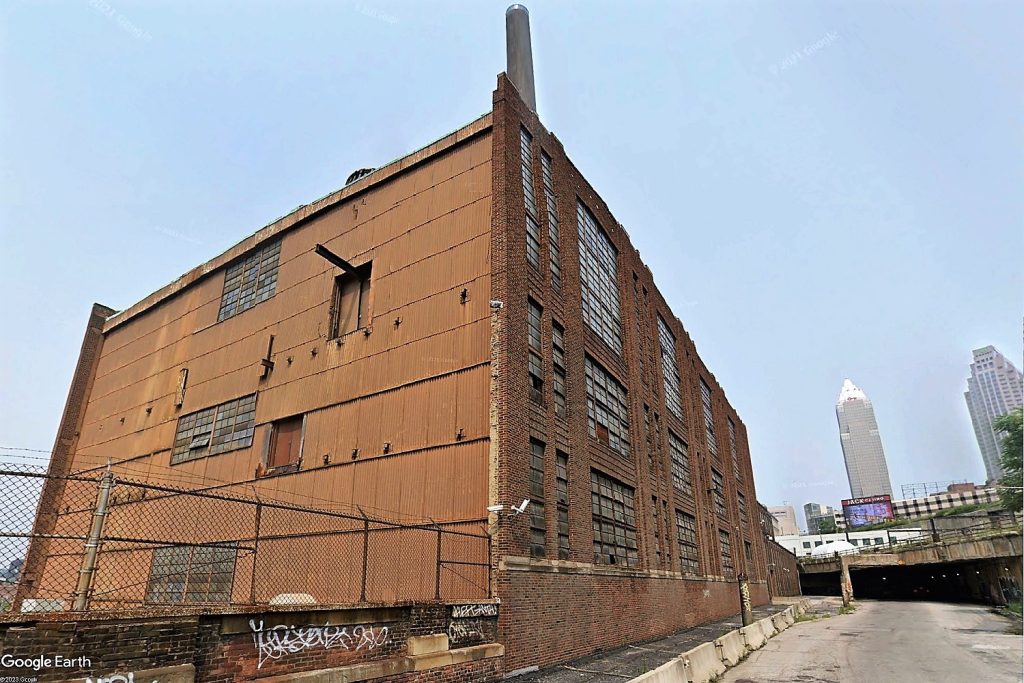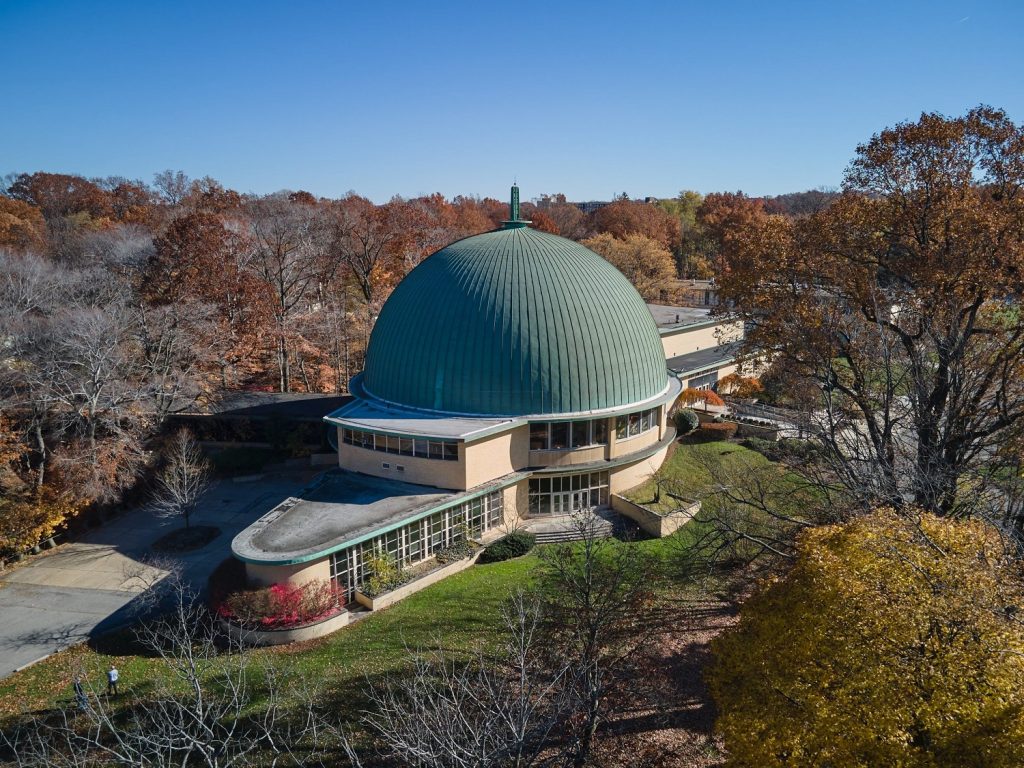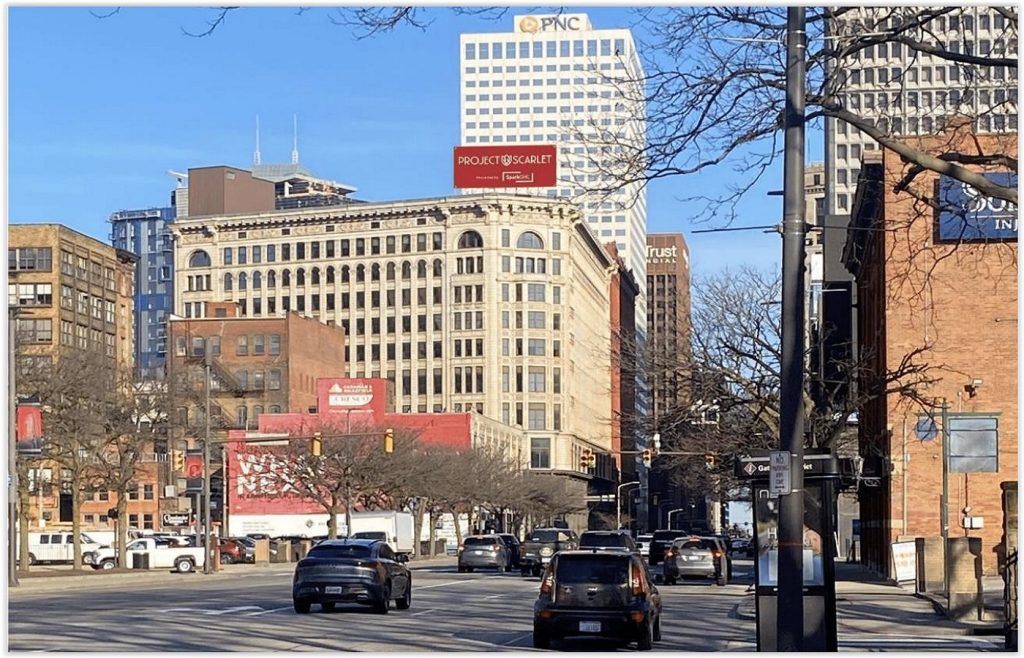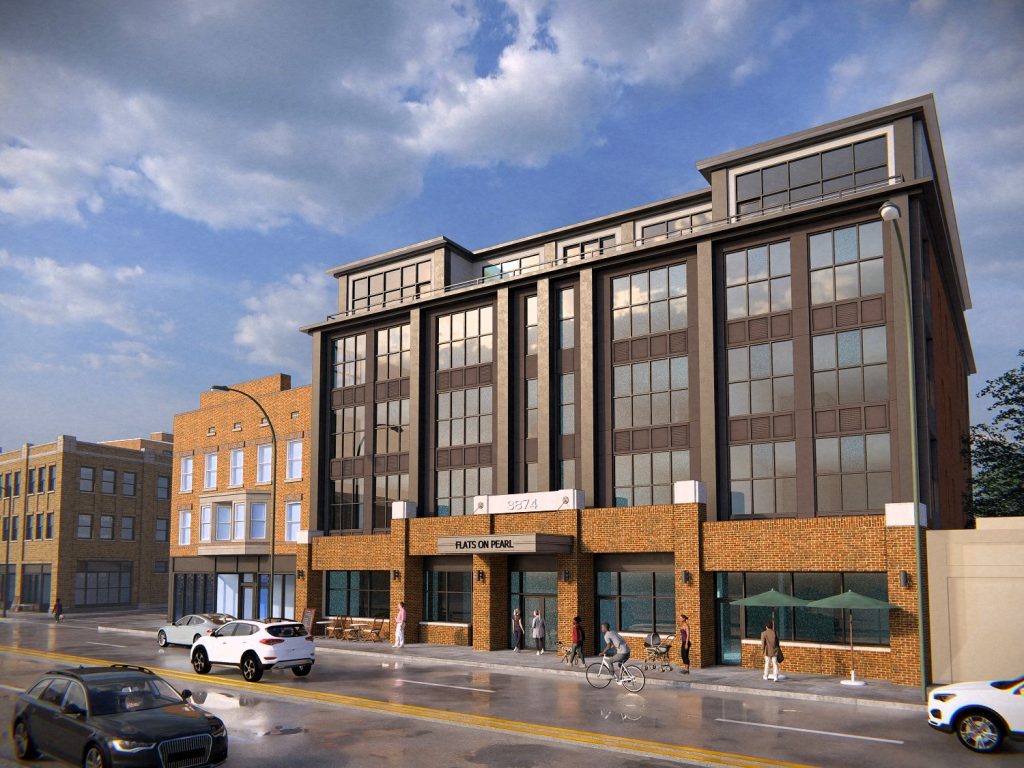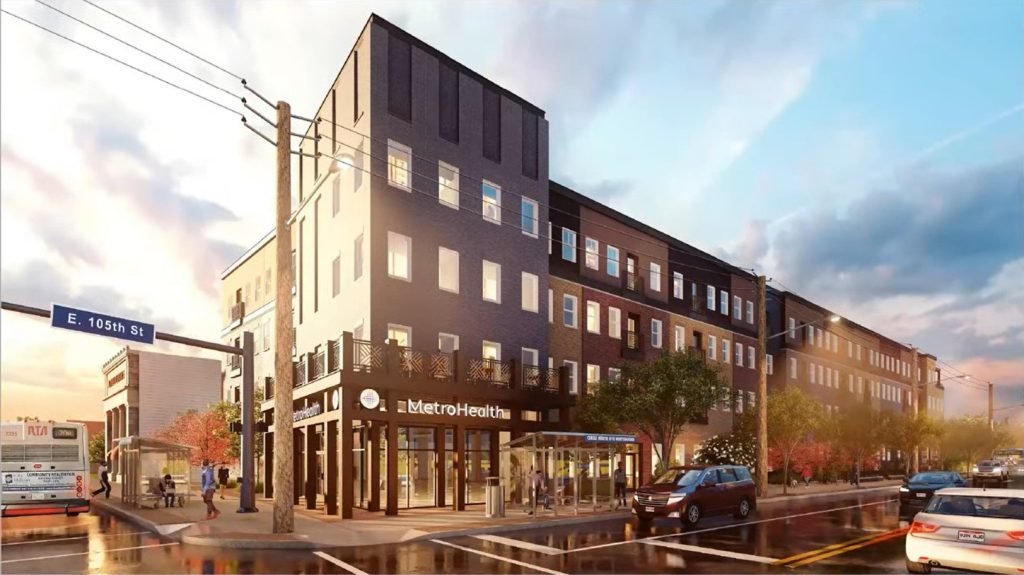
To the right of the under-construction Cleveland Clinic Global Peak Performance Center is the old, unused Cleveland Thermal steam heating plant for historic downtown office buildings. It is surrounded by Bedrock’s Riverfront development and is due to be demolished for new uses (Harrison Whittaker). CLICK IMAGES TO ENLARGE THEM.
Rose Building, Park Synagogue, others to be cleaned

Eight redevelopment project sites won a total of nearly $18 million from the Ohio Department of Development’s Brownfield Program so the sites can be cleaned up and, in some cases, their existing structures are to be demolished. One of those where demolition is planned is the former Cleveland Thermal steam plant, 2274 Canal Rd., in Downtown Cleveland.
The Cuyahoga Land Bank secured the funding to help address a total of $62.66 million in clean-up costs at those eight sites. In total for all statewide recipients, nearly $60 million in Ohio Brownfield Program funding was awarded.
The 131-year-old Cleveland Thermal steam plant, surrounded by Bedrock Real Estate’s ambitious riverfront development, will soon become a part of it. The first phase of the riverfront development is already under construction — the Cleveland Clinic Global Peak Performance Center that will also host a Cleveland Cavaliers basketball practice facility.
About $2.5 million of the Brownfield funds will pay for the “remediation and demolition of former steam plant for future redevelopment of Cuyahoga Riverfront,” according to a written statement from the Cuyahoga Land Bank.
Using coal-fired boilers, Cleveland Thermal provided steam heat for more than 100 downtown buildings for more than a century. But as concerns over carbon emissions from the burning of coal grew, the plant near a hairpin turn in the river called Collision Bend was shut down in December 2016.
Heating for older downtown buildings continues to be provided by Cleveland Thermal’s modernized plant at 1921 Hamilton Ave. that also provides chilled water to downtown customers. The Hamilton plant was upgraded with boilers that burned cleaner natural gas.
Cleveland Thermal was acquired by Canadian energy company Corix in 2015. But a deed to the riverfront steam plant didn’t transfer to Corix until 2024, with a transaction amount priced at just over $2 million, according to Cuyahoga County records.
Nora Brand, vice president of communications at Bedrock, did not respond to an e-mail seeking more information prior to publication of this article.
Historic preservation consultant Tom Yablonsky, who was previously executive director of the Historic Gateway Neighborhood Corp., said preservation of the steam plant wasn’t a focus of the community development organization because its jurisdiction ended at Ontario Street.
“I thought it could be real cool site to come off Gateway and provide access to the river,” he said. “Other than that, I never saw it as a real preservation issue for us at Gateway. It never was on my radar screen.”
“As the needs and opportunities around brownfield remediation continue to expand, Cuyahoga Land Bank has taken on an increasingly strategic and technical role,” said Cuyahoga Land Bank President & CEO Ricardo León in a written statement.
“We are proud to help guide these complex efforts that are critical to revitalizing communities, protecting public health, and making sites ready for new housing, jobs and green space,” he added. “While we’re thrilled to see eight more projects moving forward, we know the demand far exceeds the funding available, and we’ll continue to advocate for investment in this essential work.”
This latest round of funding builds on the Land Bank’s growing role as the lead administrator of brownfield remediation resources in the region. Last year, the organization secured more than $111 million in grants from ODOD for 34 projects, the largest award to any single county in the state.
In addition to the Cleveland Thermal plant, the land bank’s seven other 2025 funded Brownfield Remediation Projects are:
- City of Bedford: Bedford Community Hospital Campus remediation and preparation for future community development.
- City of Cleveland Heights: 3300 Mayfield Road site, former Park Synagogue, remediation and preparation for residential development.
- City of Cleveland: 2060 E. 9th Street; interior remediation of the Rose Building to support mixed-use occupancy.
- City of Cleveland: Merwin Avenue remediation and demolition of former industrial site for future redevelopment and green space.
- Oakwood Village: Solon Road remediation and completion of municipal landfill, preparation for development as solar field.
- City of Cleveland: Sherman Avenue remediation of former industrial site for future development.
- City of Cleveland: Ashland Avenue remediation and demolition of former industrial buildings for future development.
These projects represent a cross-section of urban and suburban revitalization efforts, supporting future development that includes new housing, economic development and greenspace restoration, land bank officials said.
The last two properties are part of a large area of Cleveland’s Central neighborhood where both the Cuyahoga Land Bank and Cleveland’s Site Readiness for Good Jobs Fund (SRF) are working to clear and clean former industrial sites.
Brad Whitehead, SRF’s managing director, said the Sherman Avenue site measures 22 acres. The Ashland Avenue site, a former Westinghouse plant which still partially stands, could be even larger more if many city land bank lots nearby are incorporated into it.
END

